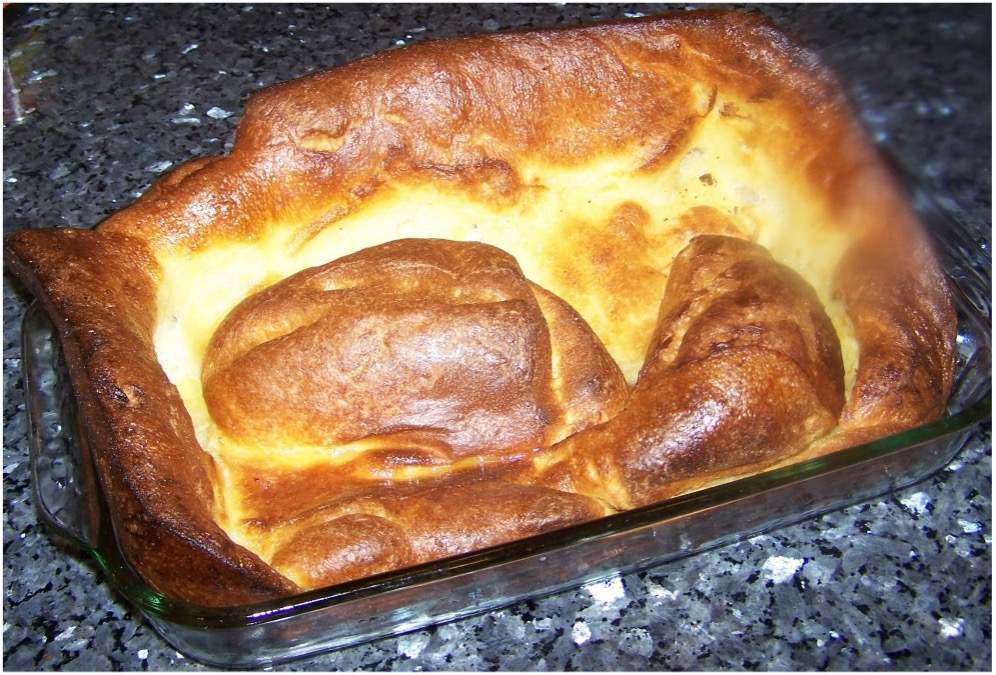Originally, the Yorkshire pudding was served as a first course with thick gravy to dull the appetite with the low-cost ingredients so that the diners would not eat so much of the more expensive meat in the next course. Because the rich gravy from the roast meat drippings was used with the  first course, the main meat and vegetable course was often served with a parsley or plain sauce. In poorer households, the pudding itself was often the only thing to eat. Using dripping, a simple meal was made using just flour, eggs and milk. This was traditionally eaten with a gravy or sauce, to moisten the pudding, re-using the brown jelly scraped from the pan when meat had been eaten the day before. One big pudding was made to cut & share rather than the individual “Yorkshires” today.
first course, the main meat and vegetable course was often served with a parsley or plain sauce. In poorer households, the pudding itself was often the only thing to eat. Using dripping, a simple meal was made using just flour, eggs and milk. This was traditionally eaten with a gravy or sauce, to moisten the pudding, re-using the brown jelly scraped from the pan when meat had been eaten the day before. One big pudding was made to cut & share rather than the individual “Yorkshires” today.
In 1737, a recipe for "a dripping pudding" was published in Sir Alexander William George Cassey's book The Whole Duty of a Woman:
“Make a good batter as for pancakes; put in a hot toss-pan over the fire with a bit of butter to fry the bottom a little. Then put the pan and butter under a shoulder of mutton, instead of a dripping pan. Keep frequently shaking it by the handle and it will be light and savoury, and fit to take up when your mutton is enough; then turn it in a dish and serve it hot.”
Similar instructions were published during 1747 in the book The Art of Cookery made Plain and Easy by Hannah Glasse, with the name 'Yorkshire pudding'. It was she who renamed the original version, known as Dripping Pudding, which had been cooked in England for centuries. William Sitwell suggests that the pudding got the name 'Yorkshire' due to the region's association with coal and the higher temperatures this produced which helped to make the batter crisper. In a 2012 poll, the Yorkshire pudding was ranked tenth in a list of things people love about Britain.
Today we are increasingly conscious of the environmental impact we are having on the planet. If you want to reduce your personal carbon footprint but still eat traditionally, try using the same methods as the Victorians. Use less meat and cheaper cuts which are often wasted. If possible, support local farmers, rearing pasture fed animals rather than those fattened on imported soya based feed.